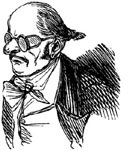
The Unwelcome Ex-“Gay” Phenomenon
CHALLENGING THE "UNCHANGEABLE"
People used to speak of The New York Times as “the good, gray Times.” On Sunday, December 10, 2000, this reputation took another sharp, self-inflicted blow to the midsection when the Times Magazine printed an article and spread its title all over the cover, yellow on black, in letters two and three inches high: “Gay, 15 and Out.”
Inside was a subtitle: “How Jeffry found friendship, sex, heartache — and himself — online.” The author was Jennifer Egan, described as a novelist and regular contributor. Early on in the article, we read this:
The popularity of “cybering,” as online sex is called — masturbating in real time to sexually explicit typed messages — has lately been supplanted (among boys, especially) with a mania for Web cams and microphones, which allow them to see and hear each other masturbate…. Gay pornography, too, can be a valuable resource; a number of youths I spoke with, male and female, said that the availability of online porn had proved critical to their discovery of their sexual orientation.
“Valuable resource.” We’re talking values here. And one of those values, according to Egan and The Times, is the value of “gay” pornography on the Internet to persuade undecided teenagers that they are better off as active homosexuals than heterosexuals.
You May Also Enjoy
Any Christian who commits sodomy, Damian explains, surpasses in sin the men of Sodom, for he "defies the very commands of evangelical grace."
If it’s OK for an out-of-the-closet “gay friar” to live in an all-male environment, then why can’t red-blooded heterosexual men live in nunneries?
The book seemed absurd when it appeared in 1962. Sixty years later, lipstick-wearing men, sex changes, and overzealous population controllers are common.

